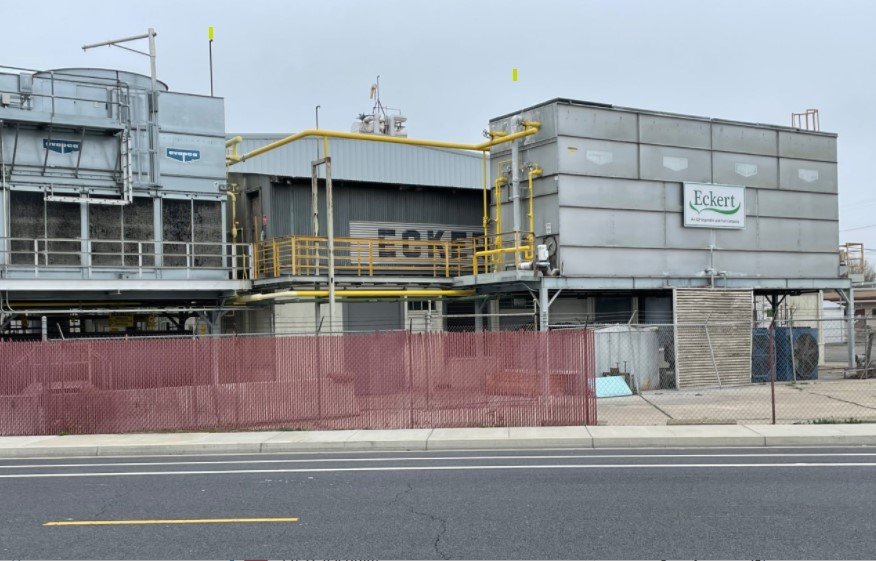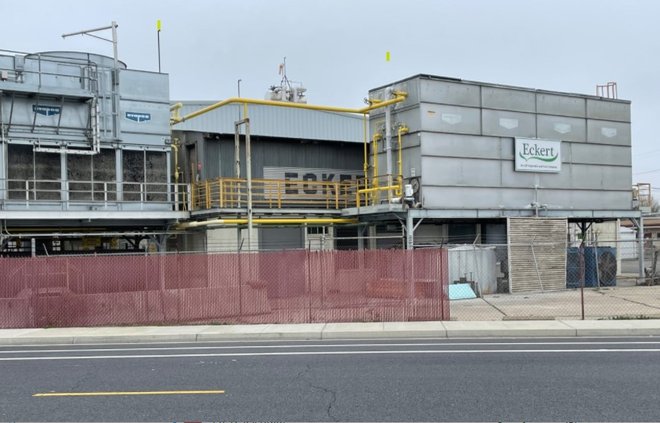Bell peppers, or more precisely the yellow and red ones, were supposed to put Manteca on the road to better water self-sufficiency,
Like a number of Manteca’s forward thinking initiatives over the years it ran out of gas with one big difference — the city keeps spending money with nothing to show for it.
Well, OK, that may not be that big of a difference given how the city spends money on studies and consultants like a sailor on a three-day shore leave in between year-long stints at sea and then wakes up with nothing to show for it except a massive hangover that taxpayers pay the price for.
The difference with this initiative is the city — then the State of California — has been requiring all new development projects to bury purple pipe. The purpose was to eventually have treated recycled wastewater flowing through them to irrigate landscaping.
The cost of the purple pipe is collapsed into the price of housing. One would think that a city that keeps giving lip service to finding ways to making housing more affordable would at least make what they essentially charge home buyers for actually is put to functional use.
Landscape irrigation in a typical San Joaquin Valley city accounts for almost half of all treated water use with the biggest water hog being lawns. Worse yet, most people waste water on grass by applying too much, watering when evaporation is at its highest, and even do useless things such as watering Bermuda grass that goes dormant and often turns yellow in winter in a fruitless bid to turn into lush green before the temperatures rise.
Given the reality is finally setting in that climate change per se has long been trumped by dozens of centuries of patterns where the West shifts between wet spells and mega-droughts spanning 50 to 100 years, one would think municipal leadership would not only have a solid plan in place but would have been executing it to the point where recycled water would actually flows through the dozens of miles of purple pipe already buried within the city.
How Manteca got in front of the purple water movement and then rolled over and played dead came about when the state was threatening the city with a cease and desist order two decades ago.
Water used to wash nitrates from bell peppers with the biggest culprits being the red and yellow ones was flowing into the municipal wastewater treatment plant from Eckert’s Cold Storage on Moffat Boulevard.
The nitrates were throwing the treatment process out-of-wrack.
A little known fact is if you eat pizza and they have bell peppers on it the odds are extremely high they were processed through Eckert’s whose cold storage facility backs up to the Manteca High football field.
Given the cost to retrofit the plant to handle the nitrates was astronomical, the city was faced with the harsh decision it would have to cut off Eckert’s and eliminate upwards of 200 jobs.
One solution was to put in place a purple pipeline from the facility on Moffat to the wastewater treatment plant property. There the nitrate rich wash water would be applied to dozens upon dozens of acres of corn grown by a farmer who leased the land from the city in order to produce silage to feed dairy cows.
Eckert’s clearly couldn’t pay such a cost.
But then came a win-win-win-win situation. Developers agreed to put the purple pipe in place in exchange for the right to pay for the wastewater treatment capacity that would be freed up by diverting Eckert’s wash water.
The nitrate rich water meant the farmer leasing the city land around the treatment plant wouldn’t need to add fertilizer to grow corn.
Nearly 200 Manteca families didn’t lose paychecks.
And, as the crowning achievement, city leaders boasted they had jumpstarted what they envisioned would be a robust purple pipe system. It would reduce the use of expensive treated water to irrigate parks, school grounds, and large swaths of landscaping.
As such it would free up water well and surface water capacity to cover growth’s increased demand for water.
The idea was further advanced by a plan that once the last link of a gravity flow sewer main from Woodward Park down Woodward Avenue to reach the water treatment plant was in place, the existing forced main would be cleaned out and converted into a gravity flow line for treated wastewater to irrigate parks and such.
The last link of the gravity main is almost in although the city is nowhere close to using the infrastructure it has buried to significantly increase the water supply.
To the city’s credit they did embark on a plan in the early days of the century to take what municipal parks they could off of treated water by switching to shallow wells placed in parks that could tap into a high water table that had non-potable water.
That meant less expensive shallow ground water was replacing more expensive water from deep wells and the surface water treatment plant.
It goes without saying far from all parks could be irrigated from shallow wells that still require PG&E electricity to operate. It is safe to say the cost of running those wells have increased significantly since then.
There is also the question as to whether the shallow wells are negatively impacting percolation to deeper aquifers via layers of sediment to cleanse the water that is ultimately pumped back to the surface for domestic use.
There of course were two efforts to sabotage the use of recycled water to assure Manteca’s future by subsequent city administrations ignorant of previous municipal investments by selling the recycled wastewater to Westside farming interests.
They pitched the lure of steady revenue for 30 plus years for clean water the city had paid to treat that was just being dumped back into the San Joaquin River.
Fortunately subsequent councils that were not party to the Eckert’s deal and measures taken to position purple water for use squashed such efforts.
The latest was four years ago when the council said thanks but no thanks to the money.
As Councilman Gary Singh said at the time, pocketing money for the recycled water was extremely shortsighted. That’s because the city would likely be giving away arguably the most critical resource in California for cash while exposing existing residents to future water shortages.
The city a few years back authorized a more thorough study of how Manteca could use recycled water to assure a more stable water supply in the face of the West’s return to its well-documented cycle of mega-droughts.
The question is whether city leadership has the moxie to follow through and go purple all the way.
This column is the opinion of editor, Dennis Wyatt, and does not necessarily represent the opinions of The Bulletin or 209 Multimedia. He can be reached at dwyatt@mantecabulletin.com





